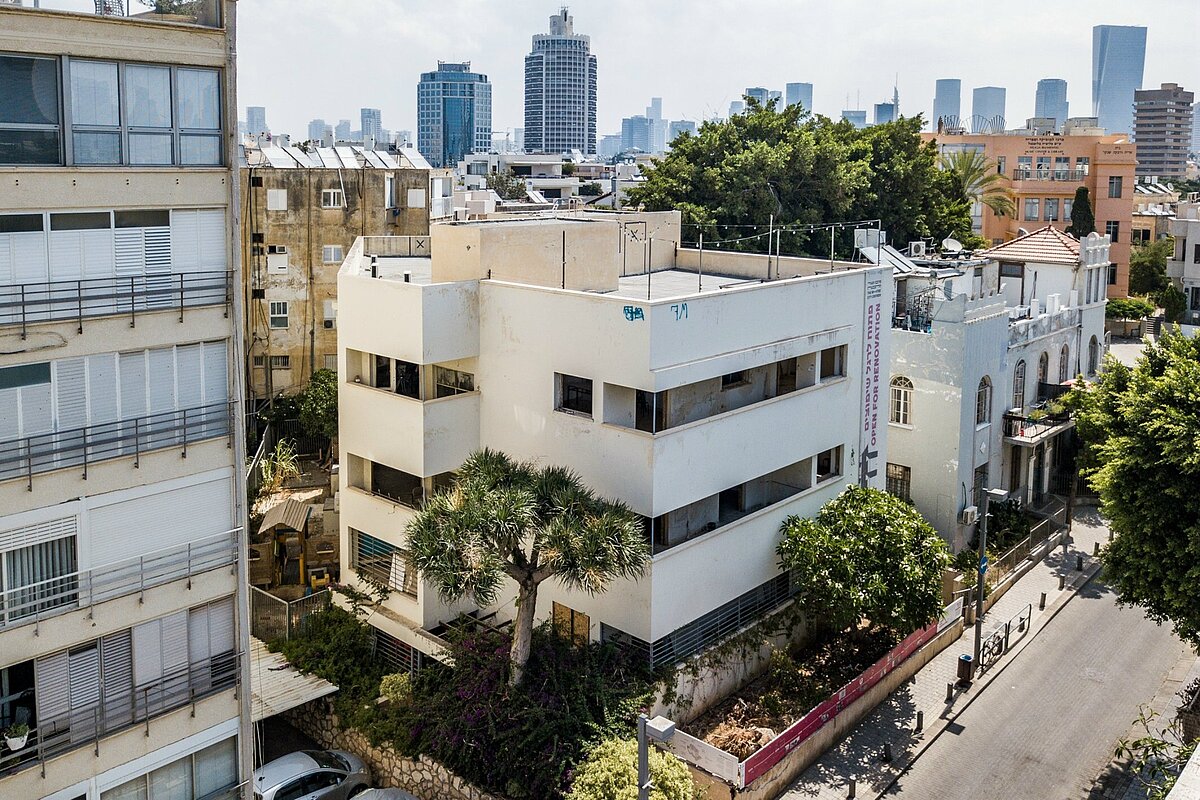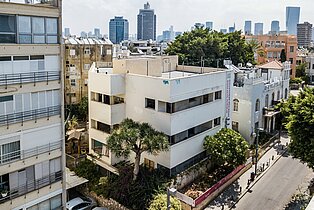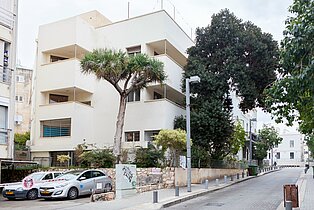German-Israeli team of trainees renovates a World Heritage Site in Tel Aviv
This year's most important promotional project for the Sto Foundation involves a significant matrix of cultural, historical, construction technology-related and intercultural factors. 100 years of Bauhaus. A residential property built in this style in Tel Aviv is undergoing comprehensive renovation, with the work being done by mixed teams of young craftspeople from Germany and Israel. The Max-Liebling House in Tel Aviv is one of about 4000 residential properties that the German Bauhaus architects of Jewish faith built in this city after 1933. These buildings now constitute a UNESCO World Heritage Site, and about 2000 of these buildings are now listed. At this special construction site in the ‘White City’ of Tel Aviv, German trainee plasterers and painters & decorators will soon be working alongside Israeli trainee craftspeople and students. ‘Open for Renovation’ is the name of this project, the goal of which is to perform a full renovation and conversion of the former Max-Liebling House, turning it into the future White City Center. On 19 September, this building will be inaugurated in its official new capacity as the German-Israeli Documentation, Mediation and Competence Centre. The charitable Sto Foundation is organising and financing the extensive facade renovation work of four German-Israeli teams, each of whom will be living and working together for a ten-day period in the city.
Konrad Richter, Foundation Council Member for Trades, is delighted: “We are facilitating and motivating an exchange between young people in the context of projects of this nature across national frontiers. Working together, learning from one another, organising leisure time together - that is our contribution towards a society that is open to the world”. The teamwork is coordinated by the Office of the White City, Tel Aviv at the German Federal Ministry of the Interior, Building and Community (BMI), based at the German Federal Office of Construction (ABB) in Mainz.
Facelift for the facade of the Max-Liebling House
Each of three teams of five trainee plasterers from the vocational training school and the multi-company training centre in Leonberg works for one week on the facade of the Max-Liebling House, renovating cracks and upgrading the plaster. Seven trainee painters & decorators from various German vocational training schools are working on the new paintwork. Each team is supplemented by five young Israeli craftspeople. This brings in trainees from the ‘Israel Antiquities Authority’. A class of architecture students from Bezalel University in Jerusalem is also interested. After the workshop session, the trainees from Germany gain an initial impression of Israel in an accompanying cultural programme. The aims of this project, promoted by the Sto Foundation, are to facilitate an exchange of training, the benefits of intercultural experience and to accomplish technology and knowledge transfer at a craftsmanship level.
Living German-Israeli meeting place
The future White City Center is part of the ‘Network White City Tel Aviv’ project, the brainchild of the German Federal Ministry of the Interior, Building and Community (BMI) that is also providing financial assistance. The 'White City’ in Tel Aviv comprises about 4000 buildings and is a typical example of the ‘International Style’ characterised by Bauhaus elements. Built as a modern residential town for emigrants and refugees from Europe in the thirties and forties, this has been a UNESCO World Heritage Site since 2003 and about half of its buildings are now listed. The new architecture centre will showcase examples of best practice to ensure that this unique heritage of building culture continues to be developed sensitively.




